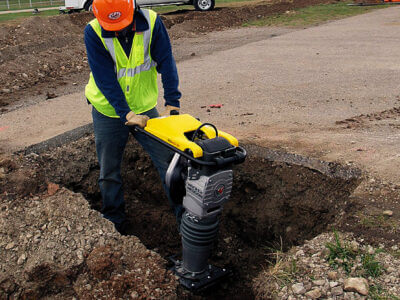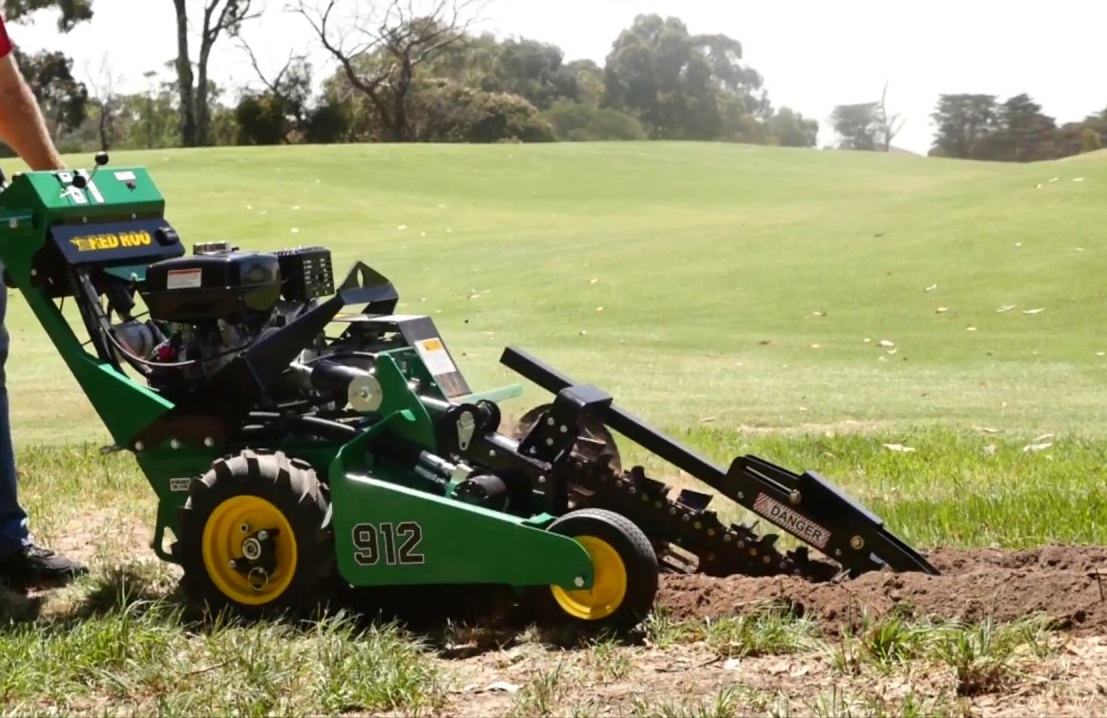A Quick Guide to Laying Pavers
[dropcap]I[/dropcap]f you’ve got a paving project planned, it is important that you pay particular attention to the ground beneath pavers and ensure it properly prepared in order to provide a stable base. Otherwise, once the paving installation is complete, it may shift – leading to uneven paving cracking, movement and a number of other issues.
Remove Debris
When preparing any base, it’s essential to remove all rocks, debris, and any vegetation to ensure that the ground beneath is able to provide uniform support without any varying soft or hard areas. This can be done with equipment available from Centenary Hire with anything ranging from a crow bar and shovel to an electric jackhammer or even a Kanga Mini Loader.
Create the Base
The recommended base for paving consists of crushed stone which is then compacted & topped with a layer of bedding sand. Your local landscape yard will be able to give you advice of the required depth for each layer.
This base is considered ideal for any paving which will carry pedestrian traffic, such as an outdoor entertaining area or pathway around the house. If the paving is to be used to carry heavier cargo such as vehicles or if the area is often very wet, a thicker base layer is recommended.
Work should begin with excavation of soil so that the pavers sit at the desired height when laid on top of the crushed stone and bedding sand. If the soil is loose then it can be compacted with the same plate compactor you have for compacting the crushed stone.
To compact and level the crushed stone base, a 60kg Plate Compactor or 80kg Plate Compactor is recommended for pedestrian traffic whereas a 140kg Plate Compactor is better for vehicles or thick bases. The best results are achieved by compacting the base in several layers as opposed to compacting the full depth at once. Ensure that you create a fall (slope) in the correct direction to account for water flow.
If you are using edge restraints for the paving stones, these can be installed and then the bedding sand can be spread out.
Use a long bar called a screed to level large areas at a time. When screeding out the bedding sand, to ensure that the fall of the base is maintained consider using a set of screed rails. You can set your level with these and then simply drag the screed across the top of them which also helps to keep your screed at a consistent level across all of your paving area.
Lay the Pavers
Once the base has been carefully laid, you’re ready to commence laying your pavers. Although you will be able to lay nearly all of the pavers in your chosen pattern without cutting them, most paving jobs will require some of the paving stones to be cut to size or cut to an angle. Tools such as a traditional Bricksaw or a Brick, Block and Paver Saw (designed for large pavers) can be used in order to easily do this.
Once laid, the pavers also need a light compaction to help them settle into the bedding sand. For this process a rubber mat is available for the 60KG Plate Compactor as this will prevent the paver surface from being scratched. Before this process is a good time to spread out gap sand across the top of the paving surface and this is often done with a broom. This final process will have to prevent both movement of the pavers as well as weeds growing up through the cracks. (at least for a while!)
Good preparation and careful planning is essential to ensure that your paving job stands the test of time. Like many tasks, the base of the paved area is of crucial importance and a rushed or incomplete preparation can lead to a number of different issues which often result in the area needing to be re-paved.
Remember though, if you are in any doubt or have any questions, please do not hesitate to talk with our friendly team at the hire desk.
Copyright Centenary Hire 2015. All Rights Reserved. This article may not be used without consent from the author. See below for more details.
DO YOU WANT TO USE THIS ARTICLE IN YOUR NEWSLETTER OR WEBSITE? You can, as long as you include the following text in its entirety:
Centenary Hire is a Tradesmen & Weekend Warrior’s best friend. Our ever increasing range of hire equipment consists of modern tools, machinery, scaffold, access equipment and site services all of which are aimed at helping you get the job done right – the first time. Our friendly staff can help you to choose the right equipment for your project or you can view & book your equipment online now at www.CentenaryHire.com.au. Drop into our store at Sumner Park or request an equipment delivery as our efficient transport service extends well beyond the limits of Brisbane on a daily basis.





